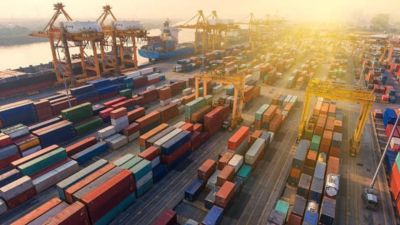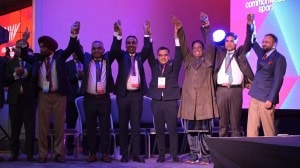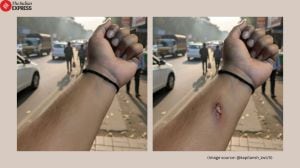Online ride-hailing segment is bracing for a shakeup, with inDrive — a startup founded in Russia’s Siberia — shifting gears to take on the enduring duopoly of Ola and Uber in the Indian ride hailing cab market. This comes in a year that heralds key battles for the way users access services on the Internet, with Microsoft taking the fight to Google’s backyard for the future of Internet search, powered by generative artificial intelligence and ByteDance, the China-based company behind TikTok, attempting to snare market share in the virtual-reality headset space that Meta has identified as crucial to its future.

The firm aims to address all three problems – with a unique pricing mechanism that takes ride-hailing back to the taxi era, and a commission cut which it claims will remain lower than what Ola and Uber charge.
Perhaps the most interesting fact about the platform is its haggling, or negotiation feature that allows both drivers and passengers to initiate a ride at a fare that has been mutually agreed upon by them. Essentially, while booking a ride, a passenger can mention the fare they want to pay, and drivers can send back their counter-offers until the two agree on one price.
The start-up, founded in 2013 at the city of Yakutsk in SIberia, believes that this is its moat which differentiates the firm from its major rivals Ola and Uber in India, both of which decide the fare for a ride through an algorithm, a process over which neither the driver nor the passenger has any control.
In many ways, for drivers – who have complained against Ola and Uber on many different accounts – it is this perceived control over the process of deciding the fare that has made inDrive’s proposition attractive to them. “When you are driving through Ola and Uber, you basically have to either accept or reject what they suggest on the app. But with inDrive, I can bargain for a price that I feel is fair. It makes me feel much more in control,” a driver who has been using inDrive for the last three months told The Indian Express.
The start-up started onboarding drivers in Delhi-NCR starting last January, by capturing them as they lined up to fill their cabs at the CNG pump. And with its marketing blitz in the last four months, it has seen a number of passengers also join the app. “Today, I am driving for the whole day, around 10-11 hours, on inDrove alone. Just yesterday I uninstalled Ola. Uber, I still use it sometimes,” another driver said. “There are now enough passengers on inDrive that I don’t have to use another app.”
Story continues below this ad
While inDrive wouldn’t say how many drivers it has managed to onboard to its platform in India, a spokesperson for the firm told this paper that there are “thousands and thousands” of drivers across several cities that have signed up for the app. The app is currently available in cities like Chandigarh, Chennai, Lucknow, Kolkata and Delhi-NCR. Soon, it plans to launch in Surat, Mumbai and Pune.
And the bargaining chip seems to have worked well for inDrive. In 2022, its app saw a 45 per cent increase in downloads year-on-year, climbing from 42.6 million in 2021 to 61.8 million in 2022. Its user base swelled 60 per cent and revenues rocketed by 87 per cent. In 2021, inDriver announced that it had achieved unicorn status, with a valuation of $1.23 billion following a funding round of $150 million earlier that year. And earlier this month, it raised $150 million using an unusual debt instrument that links repayment to the company’s performance.
The platform has another ace up its sleeve. Globally, inDrive has promised that its commission – the cut a ride-hailing takes from the fare of each ride – will remain lower than that of its competitors. While ride-hailing platforms like Ola and Uber can take more than 25 per cent of a passenger’s payment and use algorithmically deduced surge pricing, inDrive’s commissions so far range between 9.5 per cent to 10 per cent.
The spokesperson said that when it launches in a new city, it typically has a trial period of 3-6 months when it does not charge any commission from the driver. But once that period ends and if the platform has found traction in that area, it starts taking commissions from the driver. In Delhi NCR, it currently does not take a cut, but in cities like Chennai, Lucknow and Ludhiana, it has started that process. The spokesperson said that the commission is less than 10 per cent currently.
Story continues below this ad
However, drivers say they are cautious of these early numbers. When Ola and Uber started in the Indian market, there used to be no commissions. Since then, things have changed. Today, commissions that these platforms charge could go as high as 35 per cent in some instances. inDrive’s spokesperson could not assure that the commissions will remain lower than 10 per cent for the foreseeable future, but claimed that they will always remain lower than the competition.
For now though, the lower commission structure has solved one big problem that both Ola and Uber face: cancellations. Since the ride happens on a predetermined price, and drivers currently only have to pay around 10 per cent of the fare in commissions in some cities, they do not see the incentive in cancelling the ride because they know exactly how much money they will make from any given ride.
But there are currently some glaring issues with the platform that passengers – especially women – raised, primarily on account of safety. For instance, one person highlighted that unlike Uber, inDrive does not have a feature to alert the passenger when a driver takes a drastically different route than the one originally suggested.
And while the inDrive spokesperson claimed that there is a support team that operates round the clock, the facility is currently only available through textual messages. Passengers pointed out that having a dedicated helpline – that Uber and Ola do – to connect to a support executive directly over a call would be a much better option in emergency situations. The spokesperson hinted that things on the safety front could remain the same for a while. “As of now, there is nothing to be launched,” she said.

































